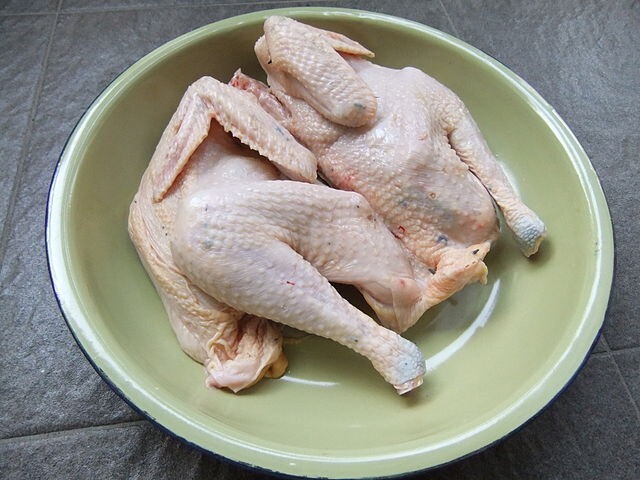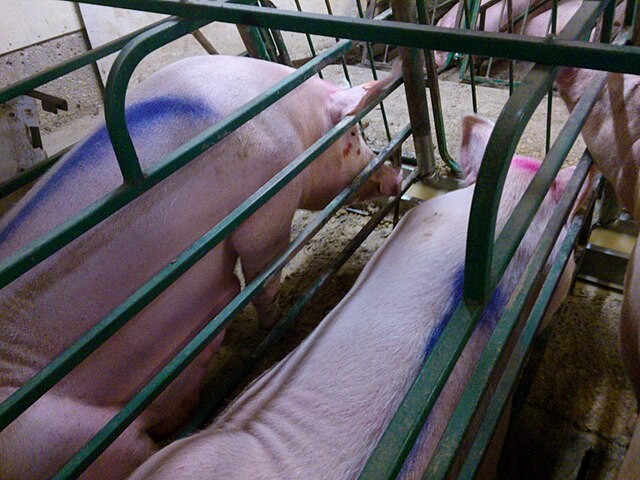5 American Foods Deemed Unfit for Human Consumption Overseas

American eating habits are known to be… less than healthy. There’s a reason that the stereotypical image of an American in other countries is a Rascal-bound, bulging flesh golem with a hamburger in each hand. Not that we’re doing particularly much to fight this conception of us. In five seconds flat on Instagram, you can find a video of someone making the equivalent of a pure beef lard lasagna, or some sort of double-decker deep dish pizza. Well, either that or a disgusting looking juice full of questionable nootropics. We seem to be a pretty binary country dietarily, eating a 3,000-calorie chimichanga one day and then attempting to cancel it out with a spinach and fish scale smoothie.
Foreign attitudes toward American food extend beyond just calorie counts, however. In a lot of cases, even just the base quality of the food that’s sold and served here doesn’t always make a particularly compelling argument for its edibility. American food safety regulation is notably a little more lax than a lot of other countries, maybe exemplified by how excited everyone is to get “Mexican Coke” just because it’s a soda with ACTUAL sugar in it.
Don't Miss
But a few American foods in particular go too far beyond the pale for some of the rest of the world. Here are five foods that are banned in other countries because of health concerns…
Mountain Dew

For a soda now inextricably linked to capital G Gamers, it might be surprising to find out that up until very recently, Mountain Dew was banned in Japan, as well as parts of the European Union. Not, as the marketing might hope, for being too extreme and badass, but because of one particular additive: brominated vegetable oil, or BVO. PepsiCo, in recent years, has vowed to remove BVO from Mountain Dew, and it seems to have followed through, though it took a while.
Some articles will mention that BVO is used as a flame retardant, but I generally think this kind of shock-value statement, like the “Subway bread has chemicals used in yoga mats” assertion that spread like wildfire a while back, is purposely obtuse. When you’re breaking things down to a chemical level, it’s not surprising that a compound will have widespread uses, only some of which will be in food. It feels a little like saying, “Your silverware contains the same metals used in nuclear warheads!”
What we CAN look at, are the actual health concerns related to ingesting BVO, which is used to keep citrus oils from separating in sodas such as Mountain Dew and Fresca. Excessive consumption of BVO-containing sodas has been reported to cause memory loss, skin and nerve problems. The Mayo Clinic describes excessive quantities as two liters per day, which, while definitely not applicable to most people, is an entirely attainable amount for true goblins.
Chlorinated Chicken

Quality over quantity is basically the tagline of American consumption, proven by the fact that a lot of people own at least three pairs of broken shitty CVS earbuds. So it’s not surprising that when it comes to providing a massive country of meat-lovers with sufficient flesh to feast on, we tend to whistle and look the other way a little more than other places. One particular practice designed to make sure more of our chicken passes code is one that doesn’t quite pass the sniff test, literally: the practice of chlorinated chicken.
Chlorine-washed chicken has been banned in the European Union since 1997. One interesting twist, though, is that it’s not necessarily the process itself that the EU doesn’t approve of. Whether it’s safe or not, the fact that you NEED to wash chicken carcasses with chlorine is a pretty glaring indication that the chickens in question probably aren’t particularly toothsome. The horrific caging practices of some U.S. chicken farms, which raise the maximum amount of chickens at the expensive of things like ventilation and space, makes for a high-risk environment that nurtures disease. They “fix” this by washing the dead bird meat in chlorine, a solution the EU has deemed less than acceptable.
Pork With Ractopamine

The next banned foodstuff is also related to inhumane animal practices, with a bit of health uncertainty thrown in. This one, however, might be more worrying because of the sheer amount of countries that ban it — more than 160, including the entire EU, Russia and China. The ingredient in question is ractopamine, which is estimated to be fed to between 60 and 80 percent of American pigs raised for pork. One thing is clear about ractopamine: It makes pigs big. Unfortunately, there’s less clarity in some other important categories. The European Food Safety Authority says, “There is not enough data to show it’s safe for human consumption at any level.” Ractopamine comes from a group of drugs originally developed to treat asthma, that were then found to effectively boost growth in animals, and it was approved after one study by the FDA — that involved 6 people — one of whom got sick.
From a moral perspective, it’s not much better. Outside of general size, ractopamine is demonstrably unhealthy for pigs. Pigs raised on it show symptoms like trembling, and often become unable to stand, at which point they’re dragged to the slaughterhouse. Yum! When the author of the above sourced op-ed against ractopamine use is the CEO of the Humane Society, that’s a pretty good sign it’s not animal-friendly.
Farmed Salmon

Shockingly, we have another entry related to poor standards when it comes to raising meat or fish. The animal in question this time is the salmon, a fish that is in very high demand, both for its flavor and health benefits, but isn’t exactly in overwhelming supply. The solution to this is farmed salmon, raised in captivity. As it usually does, raising animals in captivity eventually turns into maximizing the animals and minimizing space, resulting in salmon that are a whole lot unhealthier than their free-roaming fellows.
The meat isn’t unsafe to eat, of course. Farmed salmon is shown to have less health benefits than wild salmon, which isn’t exactly surprising, but it’s a long way from anything hazardous. Farmed salmon do have one big, noticeable downside, though: Instead of the shimmering pink slabs of fish that the word salmon summons in our mind, farmed salmon meat is often gray. Not one of the more appetizing colors, and arguably not a color at all. This hue comes from astaxanthin, which wild salmon get from natural food sources like krill. Some farms’ solution has to been add synthetic astaxanthin into the food they feed their salmon to artificially dye their meat the desired color. This was a bridge too far for Australia, which banned salmon fed synthetic astaxanthin out of health concerns.
Pink Slime

We can’t in good conscience go through an article about gross American foodstuffs without covering the famous “pink slime,” a form of processed meat that set the nation ablaze with disgust a few years ago, but is now sneaking back. Let’s, unfortunately, explore exactly what it is. Now, when you want to increase profits as a meat producer, you want bigger animals, and, in a weird perverted flip of the old “every part of the buffalo” chestnut, you don’t want any of that meat going to waste. This leads to meat producers looking at scraps of meat left on the skeletal remains of a beef carcass with the disdain of a Boomer parent staring at an unclean dinner plate.
So, this meat is scraped off the bone, heated and all the fat is spun out in a centrifuge. Now, because this meat is usually from the outer portions of the cow, it’s more susceptible to contamination, which prompts a quick spray of ammonia, a notably inedible chemical. The disinfected beef trimmings then gets piped out, dyed pink (yes, pink slime is an IMPROVEMENT in aesthetics) and shipped out. Most people, including U.S. Department of Agriculture scientist Carl Custer, don’t consider pink slime something anyone should be eating. The problem is, the USDA considers it “meat,” so there is absolutely no labeled way of knowing whether it’s in the next pack of ground beef you buy. Unless, of course, you’re in the European Union or Canada, both of which have banned the slippery stuff.